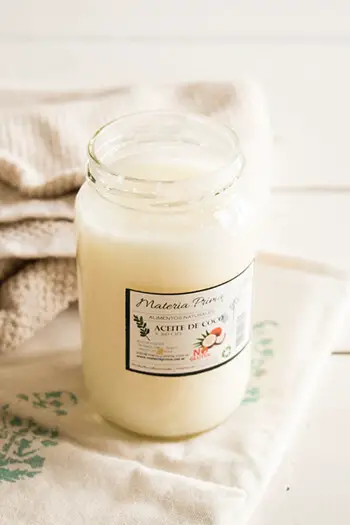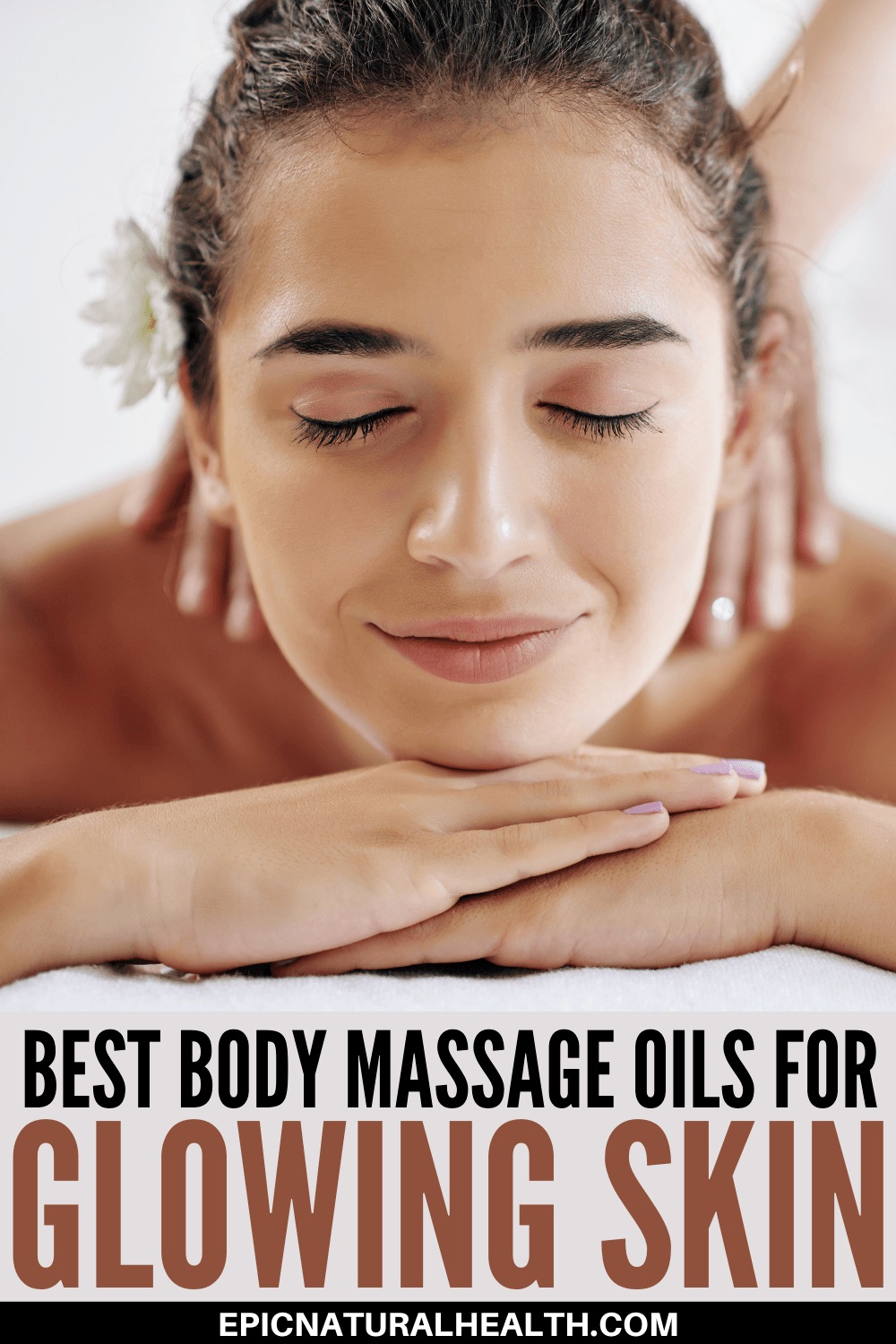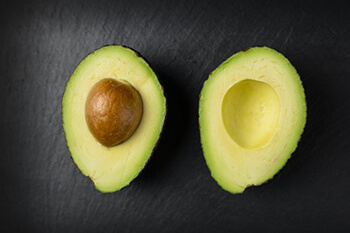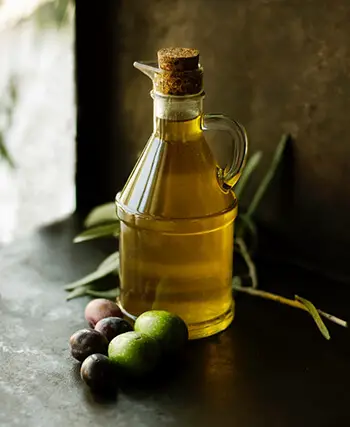Everyone loves a massage, but aside from just feeling nice, massages can also prove incredibly beneficial to the skin. The right massage oil can not only untangle the knots and tension in your body, but also help to soften the skin, prevent dryness, and create a healthy radiance and inner glow.
If you want to give self-massage a go, it isn’t always obvious which massage oil is best for you. In fact, when you’re spoilt for choice when it comes to your options, finding an oil to best suit your skin type is near-impossible. That’s why we’re here to break down our top picks in this video, with 9 of our favourite choices for healthy and glowing skin.
1. Fractionated coconut oil

If you’ve never heard of fractionated coconut oil, it’s essentially normal coconut oil, but contains only the medium-chain triglycerides in the oil. This means that the oil is stickier than the coconut oil you’re probably used to cooking with, which makes it useful for shorter massage strokes to target muscle tension.
Fractionated coconut oil is designed to last for a long time and is usually less expensive than other typical massage oils. If you’re bothered about keeping your surroundings as clean as possible, fractionated coconut oil washes out of sheets and doesn’t stain like some massage oils do. It also doesn't have the typical coconut scent, which may or may not be a benefit to you.
2. Jojoba oil

Jojoba oil is commonly used as an ingredient in skin and hair care products for babies, thanks to its kind, gentle formula. Jojoba oil is non-allergenic, will not stain, doesn't clog pores, and unlike most plant oils, does not turn rancid. Contrary to popular belief, it isn’t actually an oil – it’s a wax derived from the seeds of the jojoba plant.
Jojoba is thought to have antibacterial properties, with studies finding it capable of killing certain bacteria and fungi that can cause salmonella, an E. coli infection, and candida. In massage, this makes it good for treating certain chronic pain, like backache.
3. Sunflower oil

You might be more familiar with sunflower oil in your frying pan, but its uses are far more than culinary. It’s a fairly light oil that won’t leave your skin feeling too greasy after a massage and is packed full of an essential fatty acid called linoleic acid, which we need for healthy skin. As we get older, we lose our natural levels of linoleic acid in the skin, and massaging frequently with sunflower oil can help replenish them.
Sunflower oil is also rich in vitamin A and vitamin E, both of which help are essential for maintaining skin health. These vitamins act as antioxidants, repairing damaged skin cells eliminating harmful bacteria. It can be easily absorbed in the skin without blocking the pores, making it ideal for massage.
It’s worth being aware that sunflower oil doesn’t have such a long shelf life, and can go off fairly quickly once it’s out of a sealed container. It’s best to buy smaller amounts of the oil and store it away in a dark location if you’re not planning to use it often. Some people have found that adding vitamin E drops to the oil can help it to last longer.
4. Almond oil
It’s less commonly used in cooking because it tends to cost more than most other oils, but almond oil is particularly popular in the spa setting because of its numerous massage benefits.
Almond oil is pale yellow in colour, and is good for easily gliding over the skin. It’s fairly absorbent, but not enough that you’ll need to continuously reapply it.
Jam-packed with nutrients, almond oil is one of the best oils for your skin. It’s a good source of vitamin E, an antioxidant that can keep skin cells healthy, protecting your skin from UV radiation damage and giving it a smooth, soft, and supple feel.

5. Apricot kernel oil
Prepare to do a bit of Google searching, because chances are, you’ve never heard of apricot kernel oil. This unique substance is, unsurprisingly, derived from compressed apricot kernels. The oil is similar in texture to peach oil and almond oil, and cleverly represents the sebum produced by our own skin, which helps skin to self-moisturize.
At a slightly higher cost than even almond oil, apricot kernel oil is one for special occasions. However, you pay for the benefits – this type of oil can help to maintain the softness, suppleness, and radiance of skin thanks to its impressive vitamin E content.
Apricot kernel oil absorbs easily into the skin, so it won’t leave you with an unpleasant stickiness after a massage. If you have a nut allergy, apricot kernel oil is one of the closest oils you can get to almond oil without the nut content. With a long shelf life, you can easily store this oil in a cupboard for weeks or even months on end.
6. Avocado oil

If you’re a lover of avocado, you’ll appreciate being able to do more than just eat it – the oil from avocados is also ideal for massage. Because this type of oil tends to be heavier than others, it’s commonly mixed with one or several lighter massage oils to create the perfect balance.
Avocado’s combination of vitamins and antioxidants are saviours for unhealthy skin. The fatty acids are essential for rebuilding skin cells and giving skin a firm-yet-supple feel. Plant compounds called phytosterols in the oil can prevent a loss of moisture, promoting hydrated skin, and the antioxidants work to neutralise the free radicals that attack skin cells.
Note that if your budget is on the lower end, avocado oil might be a little too costly for you. A standard bottle of avocado oil costs around double the price of almond oil. Also keep in mind that if you have a latex allergy, you might be best avoiding this oil.
7. Olive oil

As another common cooking oil, olive oil is just as popularly used in massage. It’s a very heavy, greasy oil, so it’s never used on its own. Try combining it with almond oil or coconut oil, along with a couple of essential oils of your choice, to create an inexpensive, healing, and aromatic massage oil.
On a more basic level, you can use olive oil as a daily skin massage to combat dry or flaky skin caused by harsh weather. It’s also been found to be effective at repairing skin damage from overexposure to the sun. In India, olive oil is often used in medicinal massage for treating pain, as it can relieve swelling, muscle pain, and the common symptoms of arthritis.
As long as you store it away from heat or direct sunlight, you can keep olive oil for up to two years in a sealed bottle. Once opened, you’ll need to use it within a few months, so as a massage oil, it has quite a good shelf life.
8. Cocoa butter
When you hear “cocoa”, you probably instinctively think of chocolate. But before all the bad stuff gets added to it, cocoa is actually pretty good for us. Once cocoa became available in butter form, we were able to use it for massage – and it changed the spa world forever.
Because cocoa butter is such a versatile, smooth-textured oil, it’s incredibly moisturizing for the skin. It’s also chock-full of vitamin E and other important vitamins and minerals, which hydrates the skin, protecting it from harsh environmental conditions that might lead to dryness and promote aging.
Cocoa butter is pale yellow in colour, and is usually sold as a lotion or massage bar. If stored correctly, you can keep coconut butter for between two and five years. As a massage oil, it provides smooth glide and is good for all skin types. If you’re allergic to cocoa, unsurprisingly, cocoa butter isn’t the massage oil for you.
9. Grapeseed oil
Grapeseed oil is fairly fancy, right down to the way it’s manufactured: it’s extracted from grape seeds after they have been used to make wine. Like many other popular massage oils, grapeseed oil contains linoleic acid and a whole host of antioxidants that are good for promoting glow in the face and body.
Unlike coconut oil, though, grapeseed oil is non-comedogenic, meaning it doesn’t clog pores. This makes it appropriate for use on people with even the most sensitive of skin types.
Why use these basic massage oils?
Using basic oils for your massaging means you have control over exactly how much – or how little – ingredients go into your concoction. Shop-bought massage oils intended for beauty purposes often contain ingredients for preservation, which aren’t always the best for our skin.
Not only that, but shop-bought massage oils tend to cost a lot more than an oil created with the ingredients you already have in your cupboards. So not only are you treating your skin more kindly, you’re doing your wallet a favour, too.
Conclusion

There are so many skin-based benefits of massage to take advantage of. The massage oils we’ve mentioned in this video are ideal for treating a whole host of common skin ailments, from general aches and pains to more targeted discomfort.
There’s no need to splash out on expensive massage products when you can use the oils sold at your local convenience store. If massage is your thing, try experimenting with a combination of oils to find the one that works best for you.
We briefly mentioned aromatherapy oils in this video, and we recommend looking into different scents and blends to take your massage experience to the next level. Some of the best aromatherapy oils for massage include lavender, which promotes relaxation and wellbeing; peppermint, for reducing pain; coriander, for relaxation and decreased nervousness; and bergamot, which reduces tension and calms the muscles.

